To Prince George: Huble Homestead and Railway Museum
Saturday was going to be a really easy day. The only solid plan was to have a good look at the Railway & Forestry Museum in Prince George, but I was open to other options as they were presented.
The Crooked River Rest Area was empty when we arrived, and stayed quite all night. There was little traffic on the highway, and a semi and an RV had joined us for the overnight (they had both left by the time I shot this photo). It was going to be a gorgeous day to explore! The forecast was calling for a high of 22°C (72°:F).
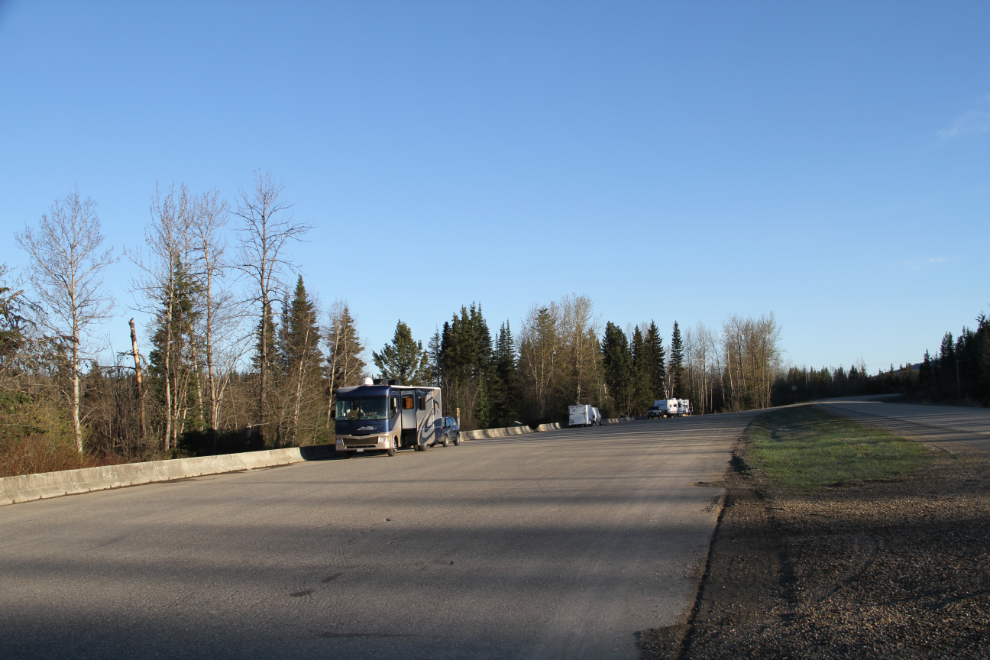
The kids’ mornings usually look pretty much like this 🙂
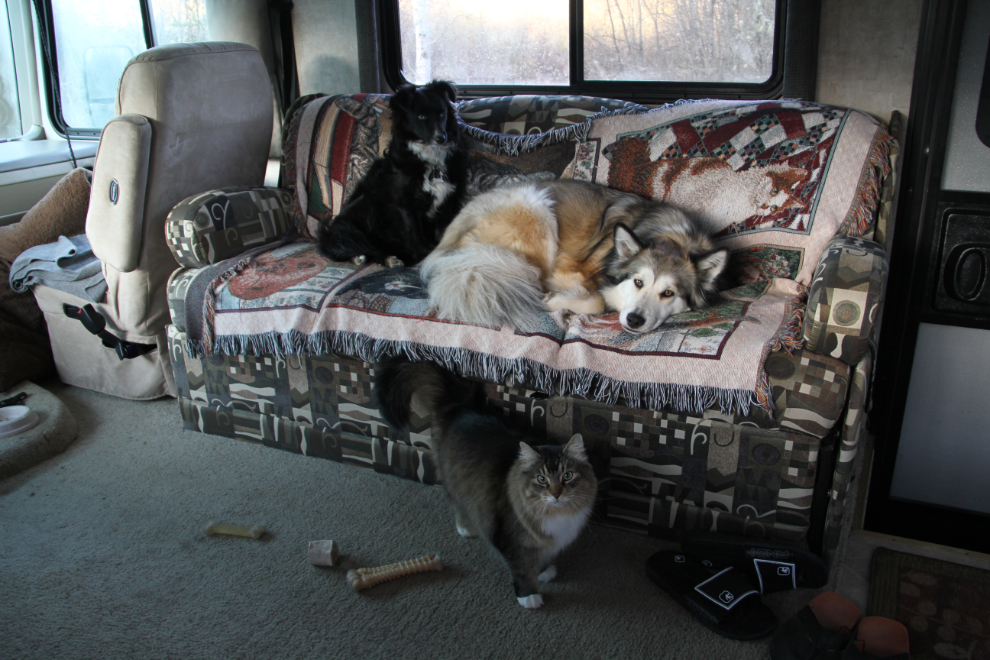
Until I saw that the parks were gated, I had planned to overnight at the Crooked River Provincial Park, but closed or not, the description sounded like a good place for a long walk with Bella and Tucker – their options for walks might be quite limited today.

Yes, of course the dogs are on leash 🙂 You know, as much as I keep wishing that I could have them off-leash, the outcome with the bear at Tumbler Ridge might have been very different if they hadn’t been on short leashes. My walks would certainly be more fun without leashes, but their safety is the only thing that counts.
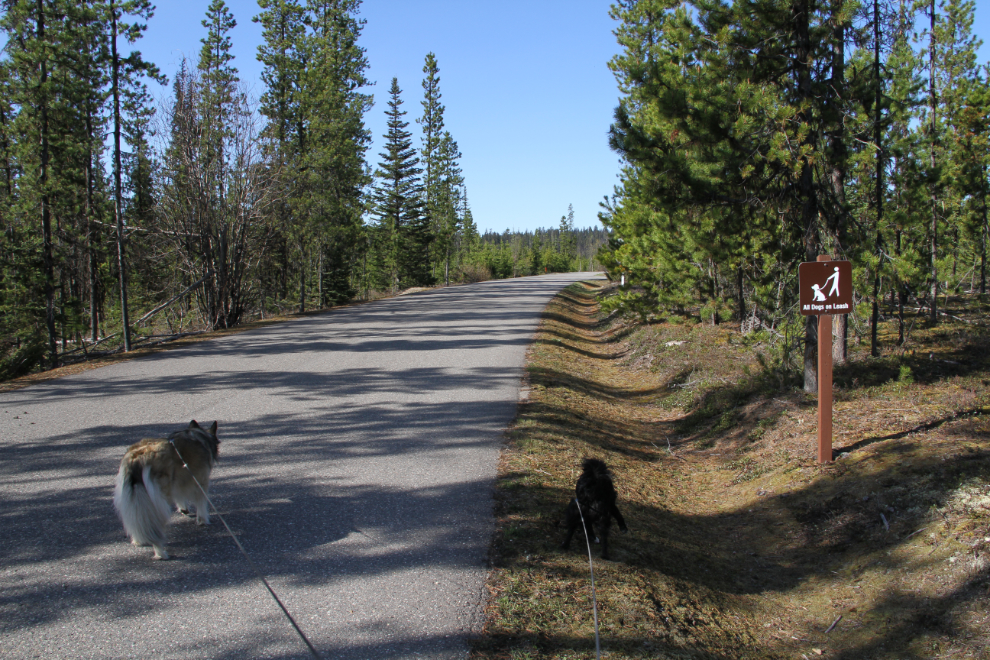
The park is as beautiful as the description led me to believe. Many of the picnic tables are being rebuilt, it appears. This is the day-use picnic area overlooking Bear Lake. There are 3 very large parking lots for day-users – it must get very crowded on a warm weekend.
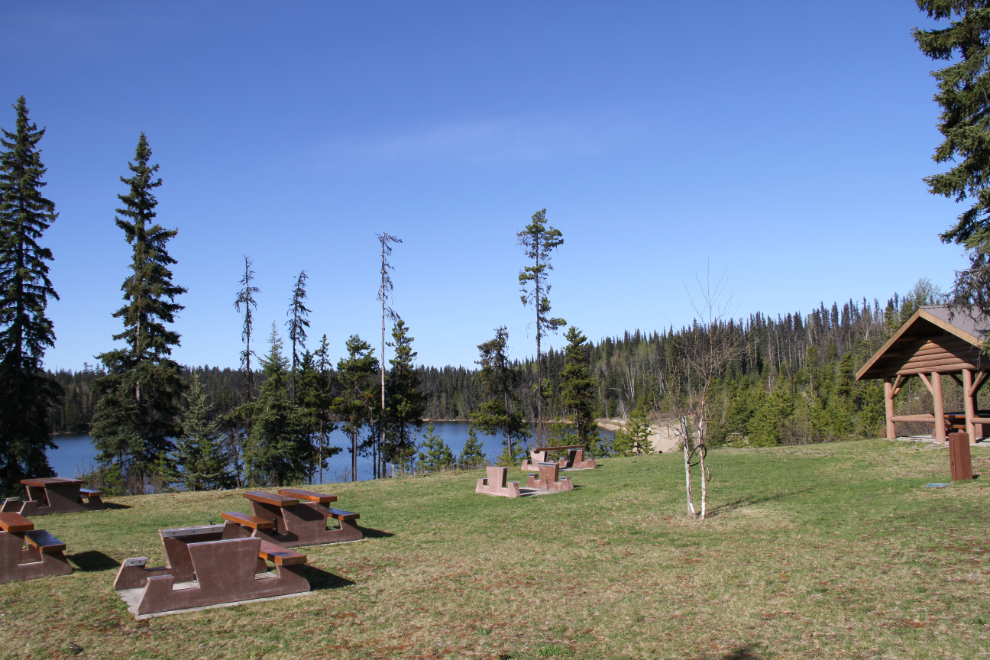
The sandy beach is very nice, and there are even 2 showers to get the sand off.
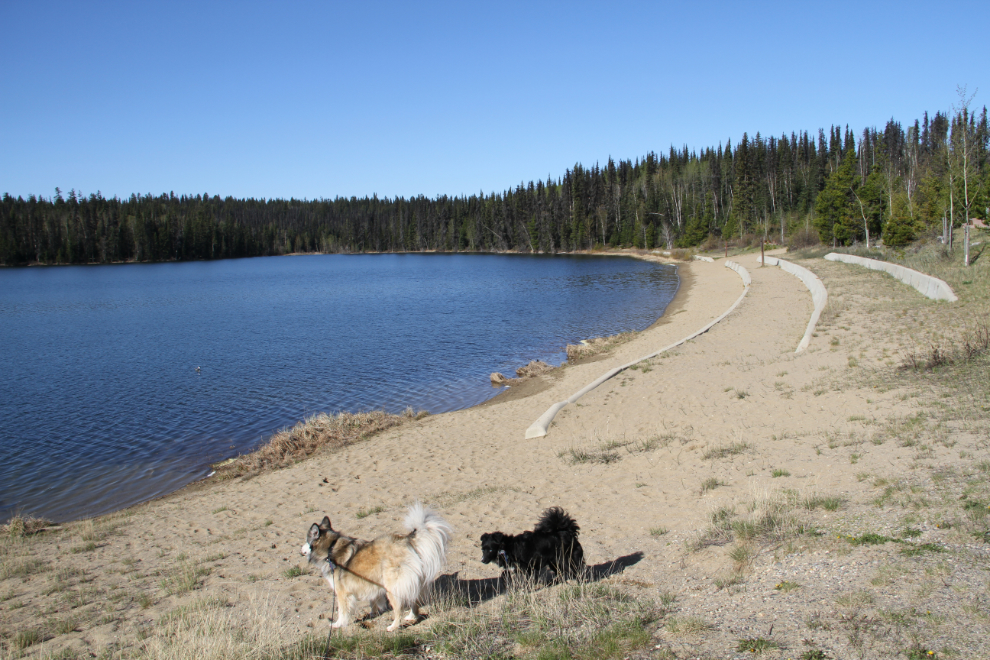
Bear Lake looks very different on the campground side. This is the natural look of most lakes in this region – not very swimming-friendly.
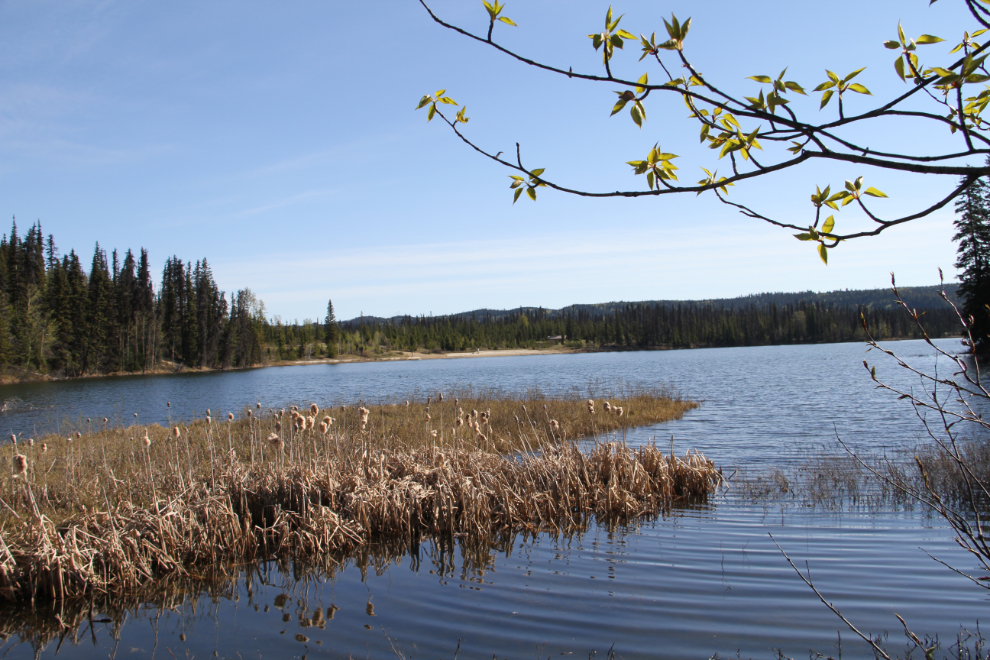
The campground is very nice. There are 64 large forested campsites, 16 of them lakefront. The park also has 9 km (5.1 mi) of hiking trails.
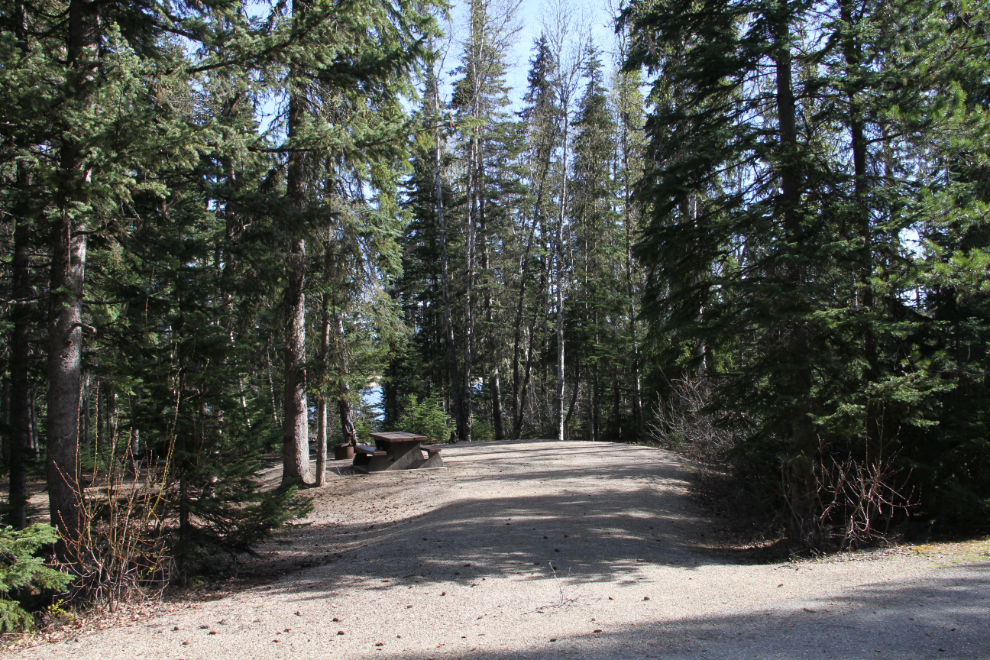
A sign for the historic Huble Homestead caught my eye. Another of the many places that, although of interest, I’ve never made the side-trip to before. This gravel road leads 6 km from the highway to the farm.
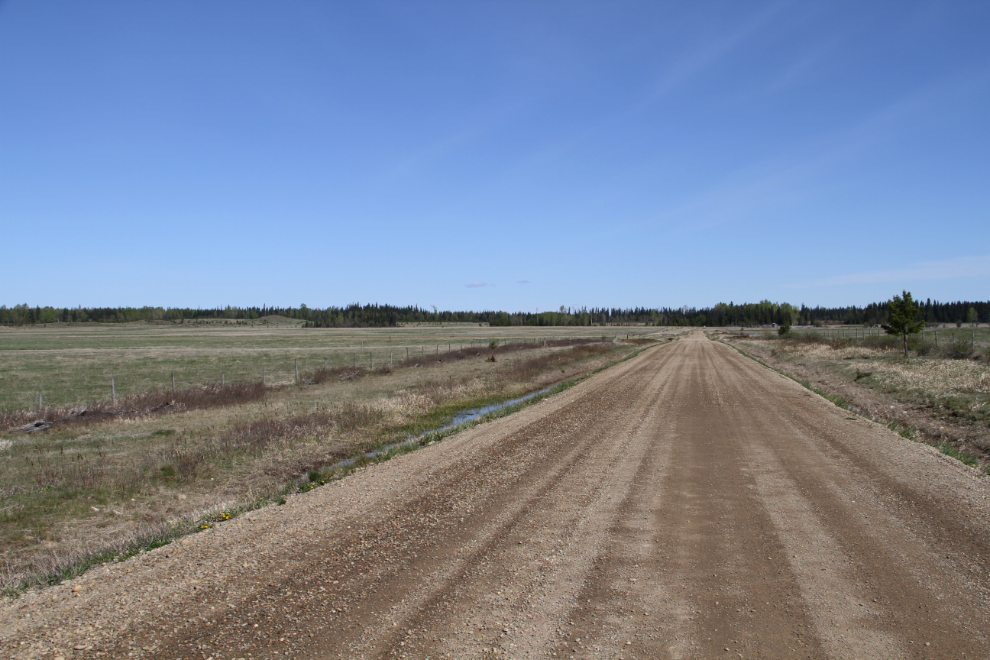
New and old fences along the road. This area has been farmed since BC’s earliest days as a British colony.
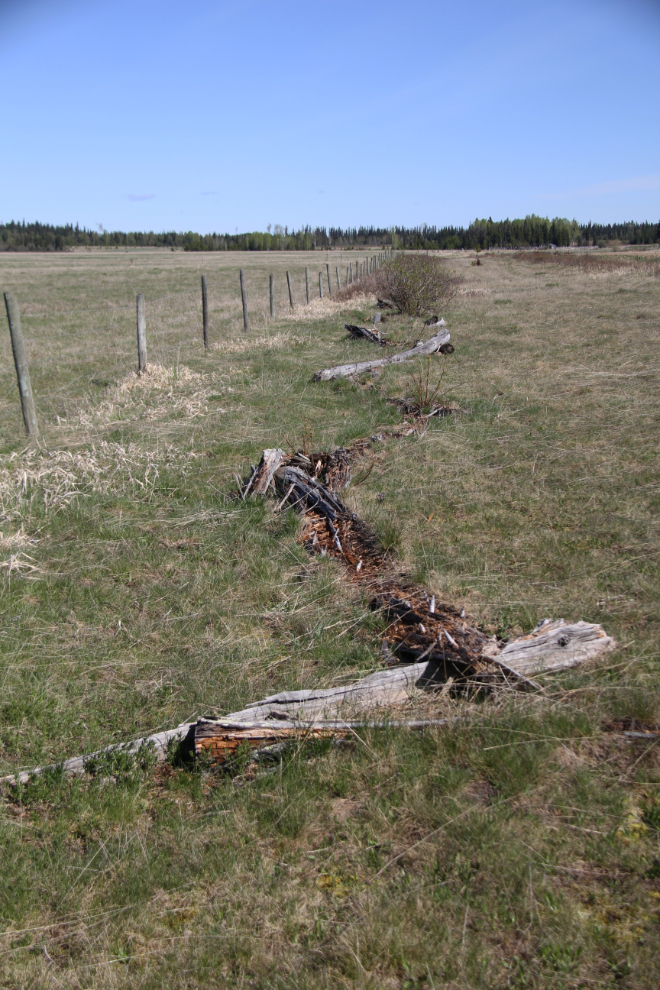
I found it very interesting that the parking lot for the historic site requires a 600 meter/yard walk to the property (though disabled people can be dropped off at the gate). The walk down a shady road is well worth while. The farm – both the location on the Fraser River and the buildings – is very nice, a tribute to the skills that went into building it.
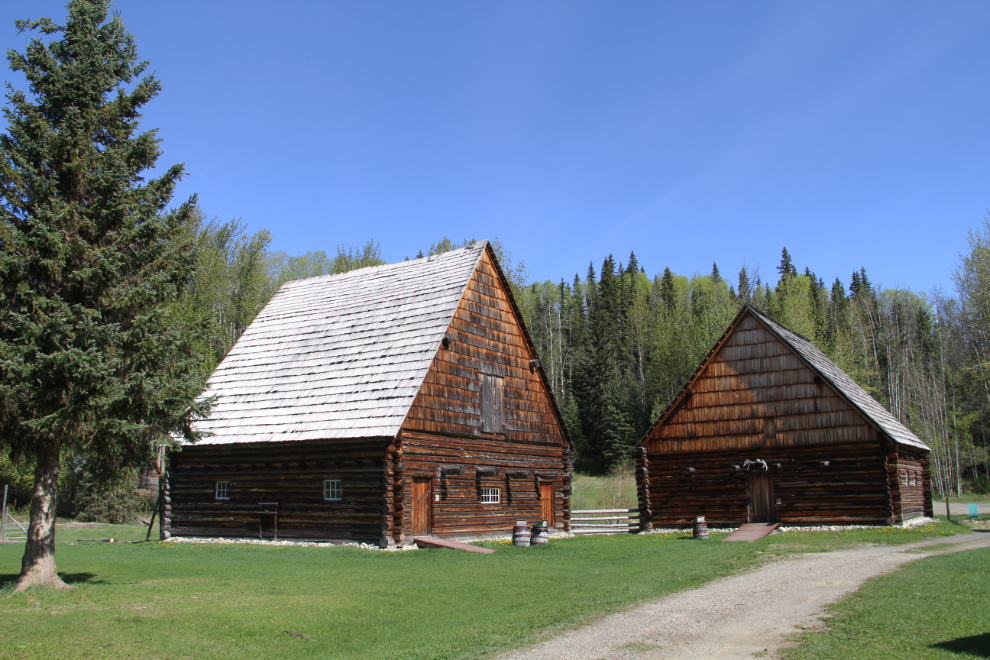
Back in the day, the home would no doubt have had a sweeping view of the Fraser River, but trees have been allowed to grow. If I was park manager, the historic view would have been maintained 🙂

I took Bella and Tucker back to the motorhome, then went back down with my drone. It seemed like the perfect time and spot for a lunch, but as I was getting set up, a gusty wind arrived, so the launch was scrubbed.
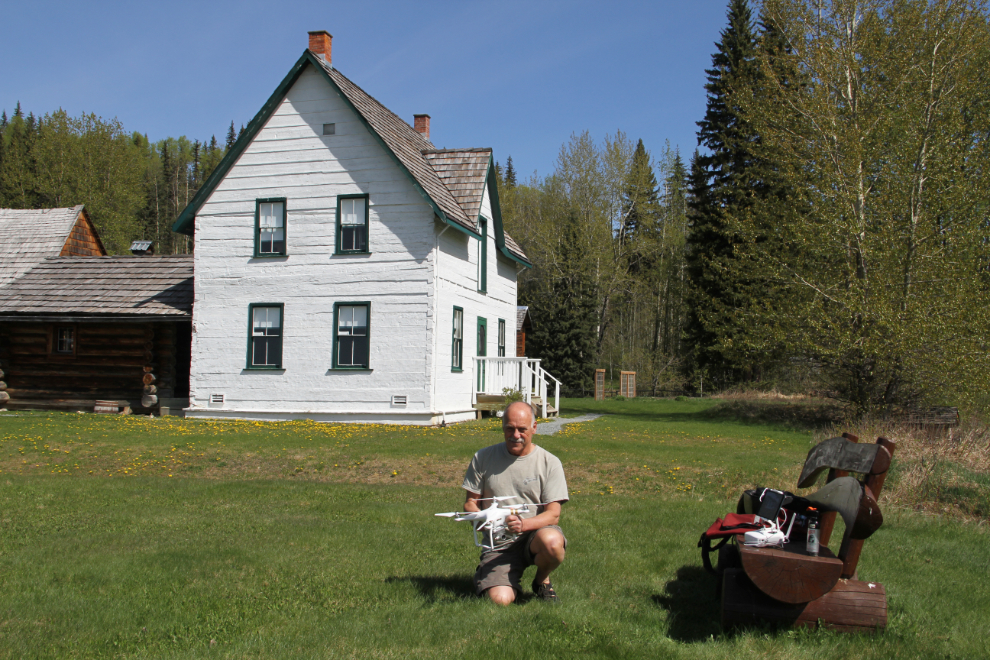
One more shot of one of the pieces of equipment around the farm, and it was time to get to the railway museum in Prince George.
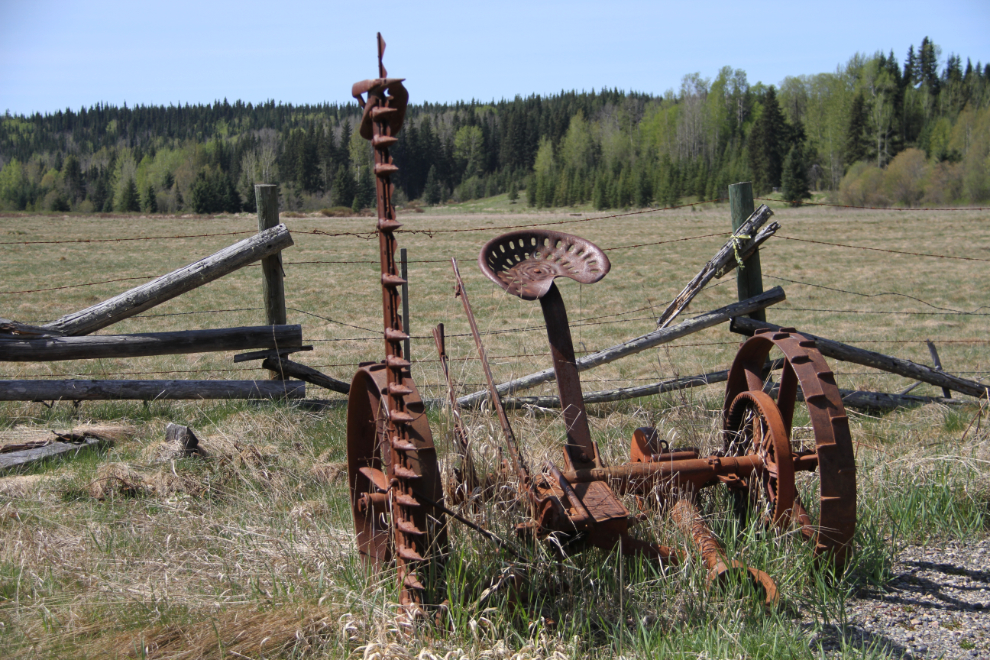
The mandate of the Central British Columbia Railway and Forest Industry Museum Society is “to preserve and interpret the history of the railway, forestry and other industries and culture that grew around them.” The property is large, the collection is enormous, from steam engines and models to logging trucks and phone books. All of the buildings and many of the locomotives and railcars are open for viewing, and anyone with an interest in old “stuff” should not plan on just a quick look!
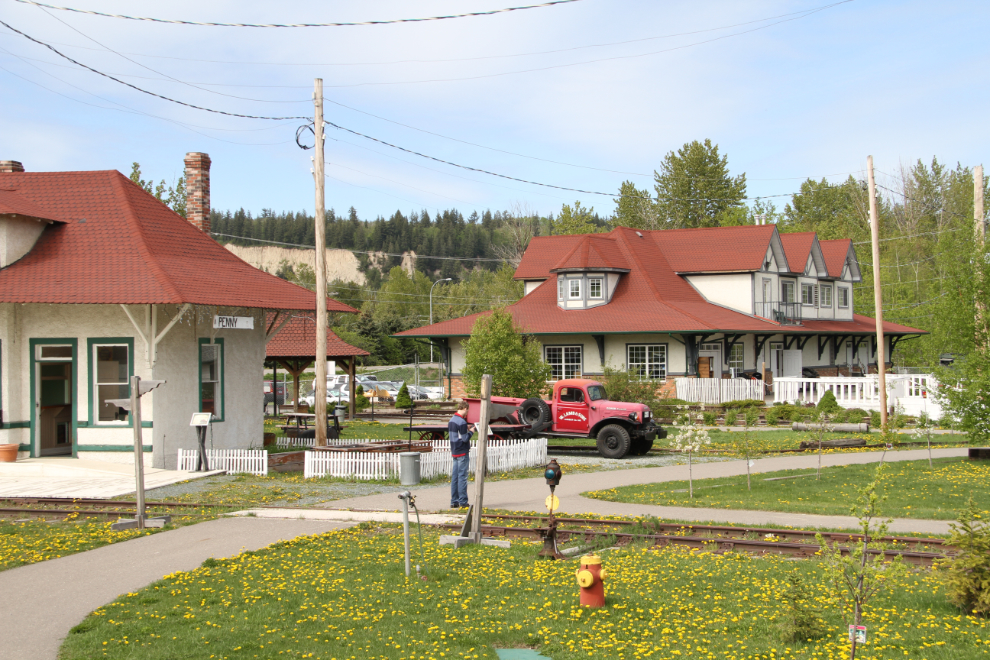
Steam locomotive 2520, a 4-6-0 from 1906, was used in Ontario until the 1950s. I don’t know how it ended up in Prince George – if there’s an interpretive sign, I missed it (there are many, that give much more information than the Self-Guided Tour brochure).
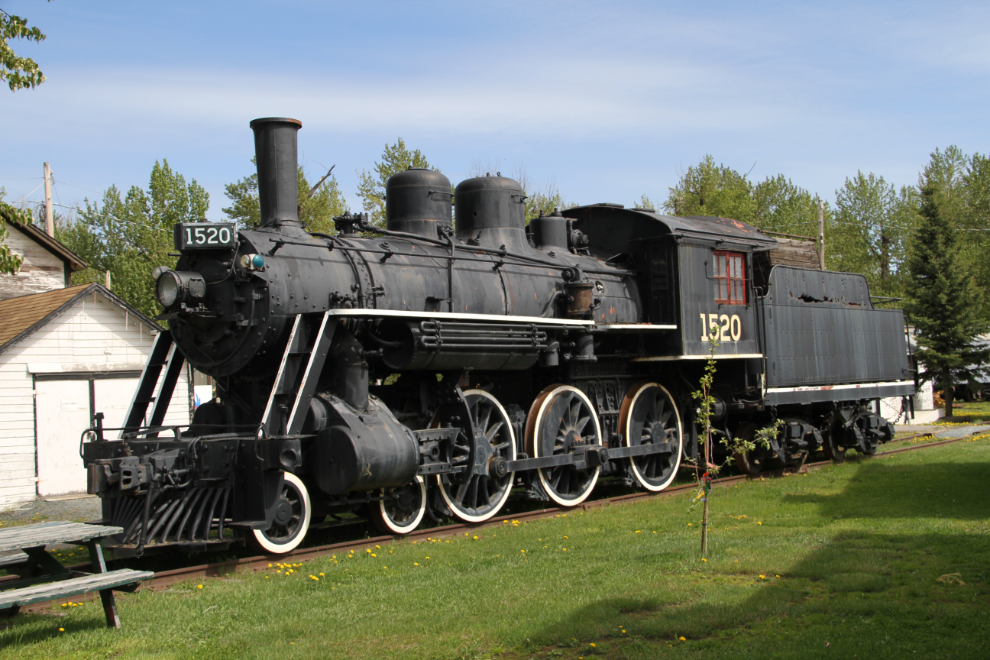
The waiting room in the restored Penny Station, a Type-E Grand Trunk Pacific station which was built at Lindup in 1914. With the decline of Lindup, it was moved by flatcar to Penny in 1947, and when it was slated for demolition in 1987, the fledgling museum moved it by truck on an ice bridge and then 100 km on roads to its current location.
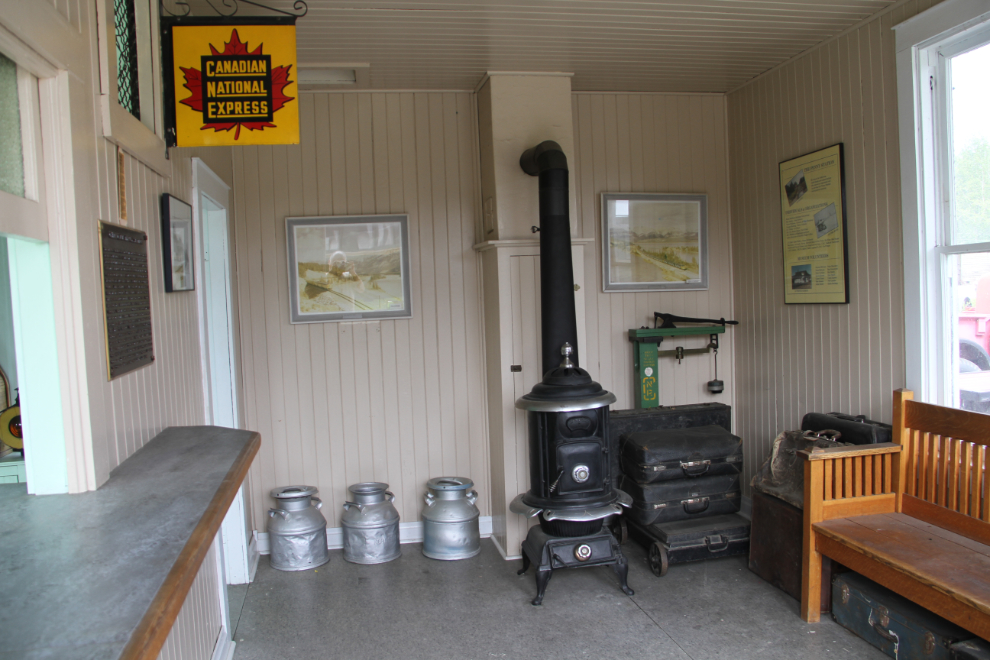
Built in 1933, the Nechako was originally a tourist sleeper car. After a fire gutted it in 1915, it was rebuilt as a business car and was used across Canada until 1974 when it was sold to te Great Slave Lake Railway, who never used it. It was moved to Vancouver and converted to a reception centre. During Expo ’86, it was the VIP reception centre.
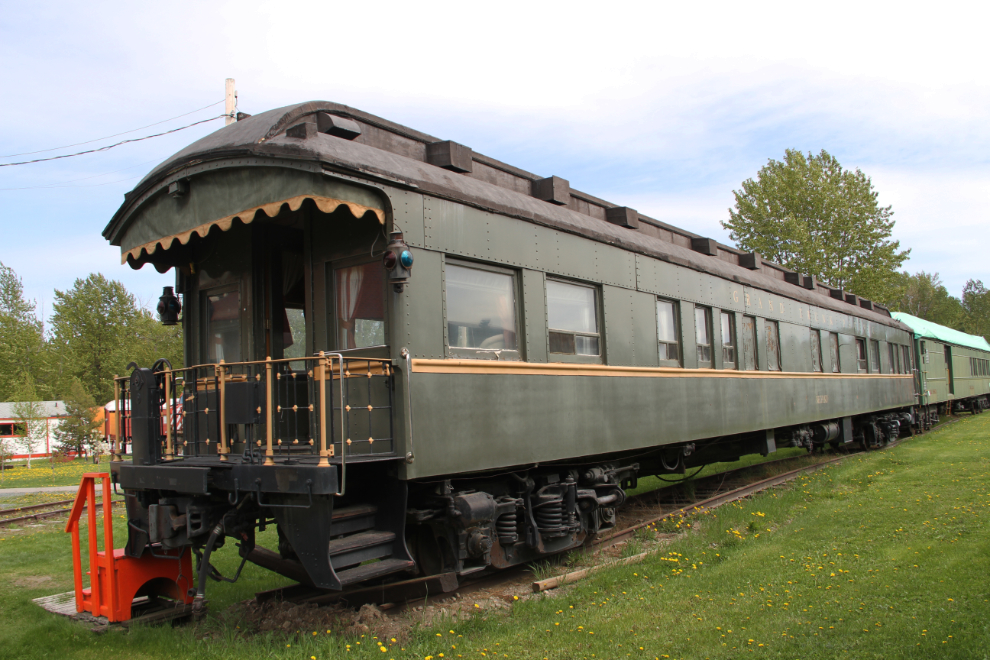
BCOL 6001 was one of 7 electric locomotives built for the Tumbler Ridge line, where they were used from 1983 until 2001. The line was electrified because power was close and abundant, and long tunnels made the use of diesel locomotives problematic. By 2001, however, diesel locomotives were running much cleaner, and the electric ones were replaced. The other 6 were sold for scrap.
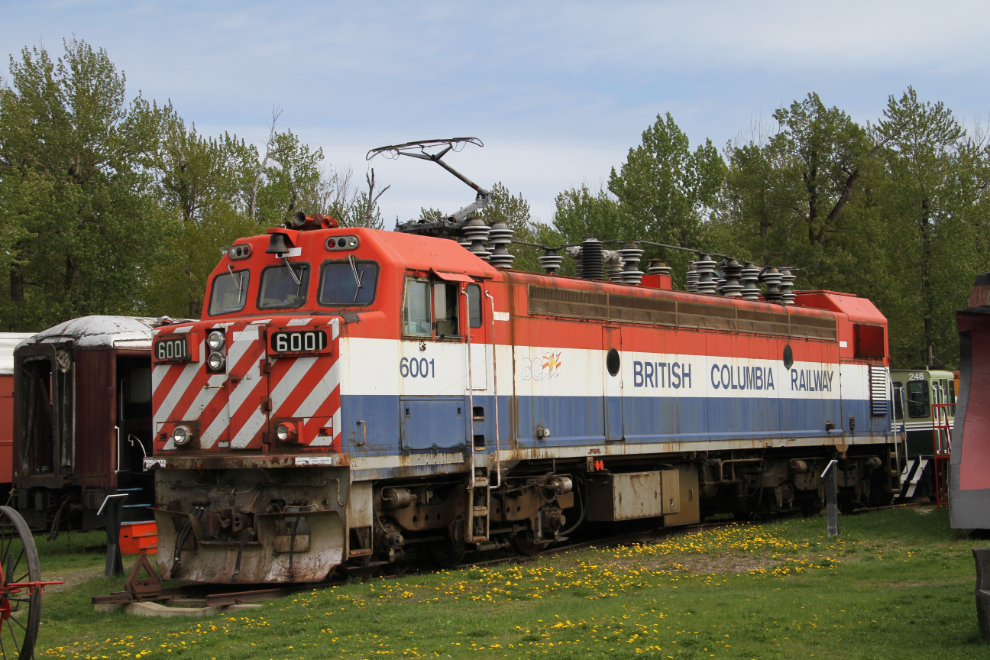
When I was young, beehive burners, used for burning scrap wood, were seen at sawmills all over BC. In 1997 they were banned because attempts to make them burn cleaner had not been effective enough. Only a handful remain now, most abandoned but some repurposed as buildings. At the railway museum, the little train that takes passengers around the property runs through the burner.
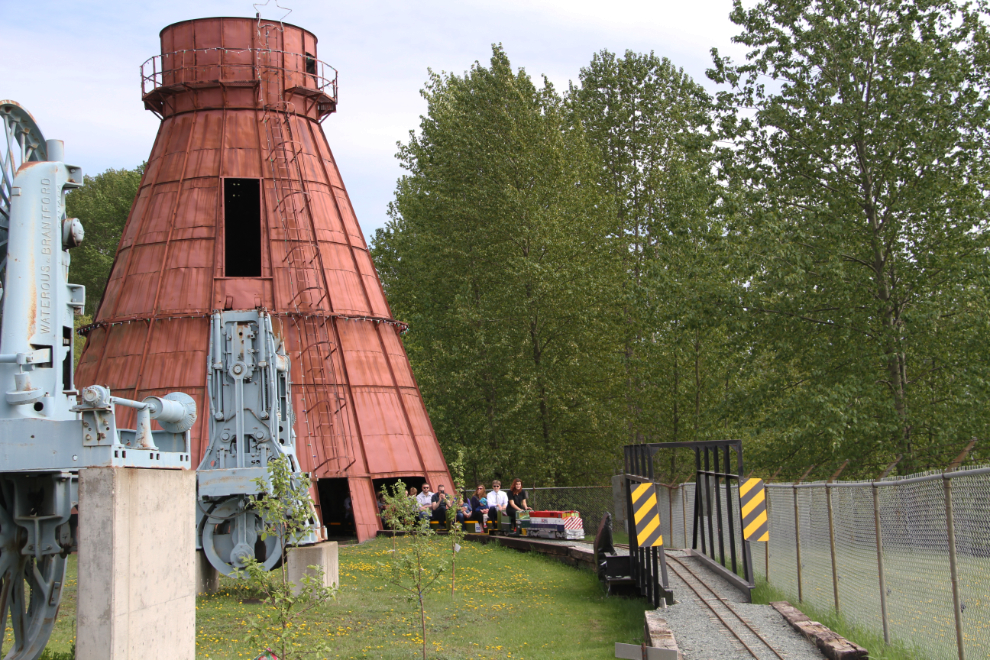
This is the first automatic telephone switcher – invented by mortician Almon Strowger in 1891, “The Strowger” made telephone operators unnecessary. Visitors can use 2 telephones there to watch the amazing machine in operation. I have no idea how it works, but it’s very cool to watch it doing whatever it is that it’s doing!
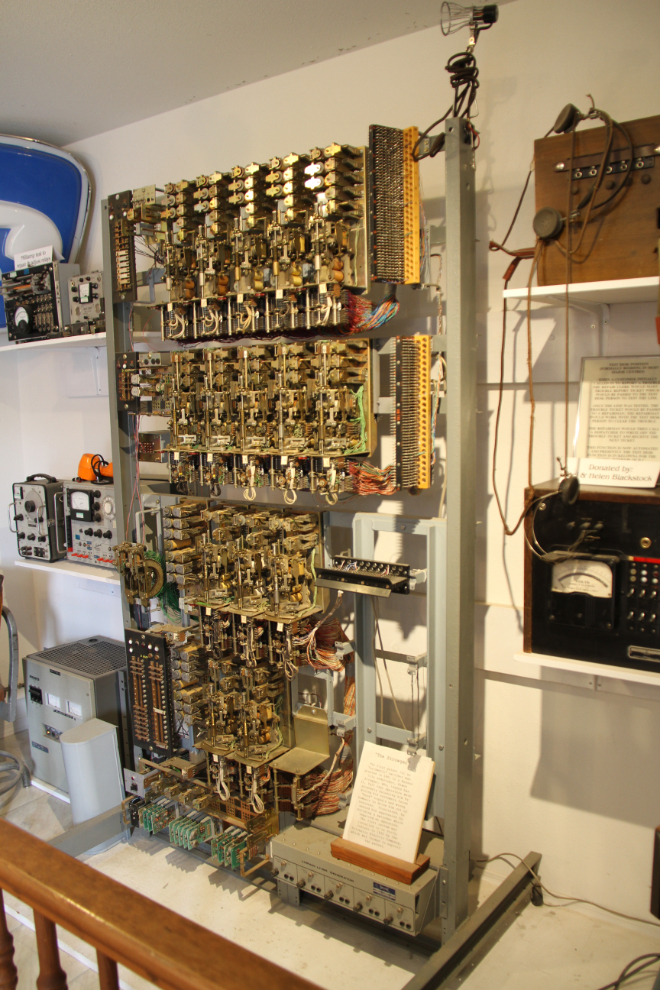
My Head Researcher (Cathy) is assisting with the trip – she pointed me to Blue Cedars Campground a few miles west of Prince George off Highway 16. It gets mediocre reviews but Cathy thought that it had potential. It was perfect, with a large pull-through site and strong wi-fi.
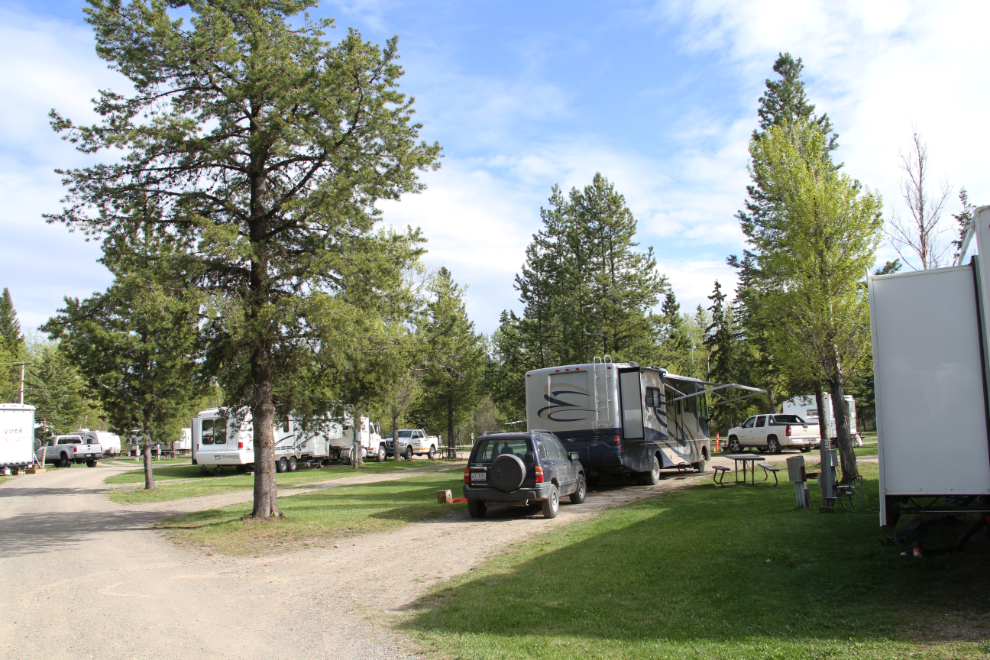
A huge bonus was the 25 km of walking trails right at the park entrance.
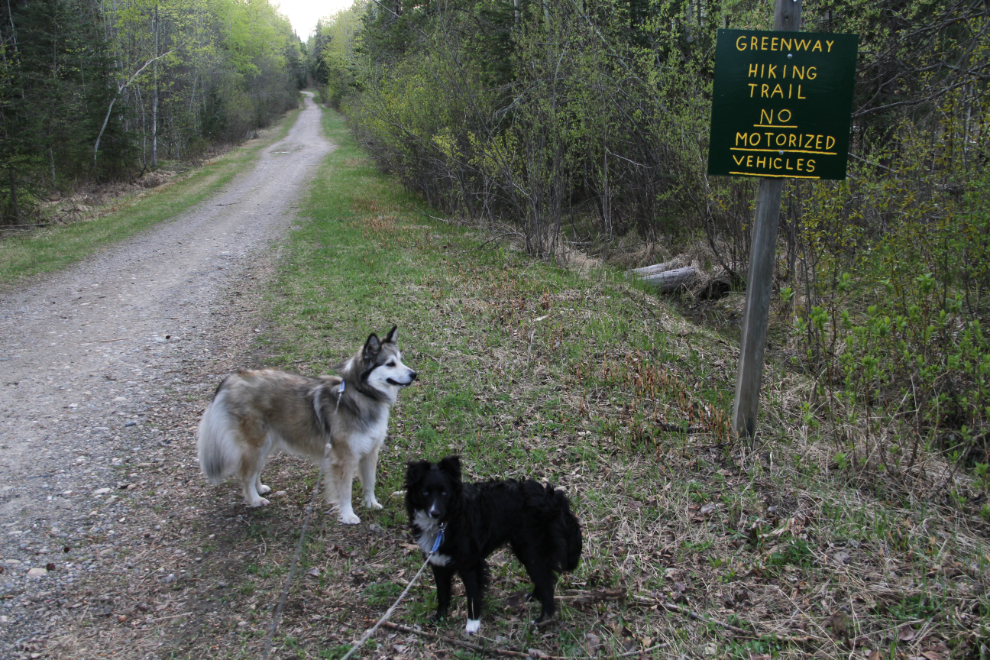
The next stop would be 2 nights boondocking at spectacular Farwell Canyon west of Williams Lake. Since a local friend took me to the canyon last Fall, I’ve been anxious to get back with the motorhome.
